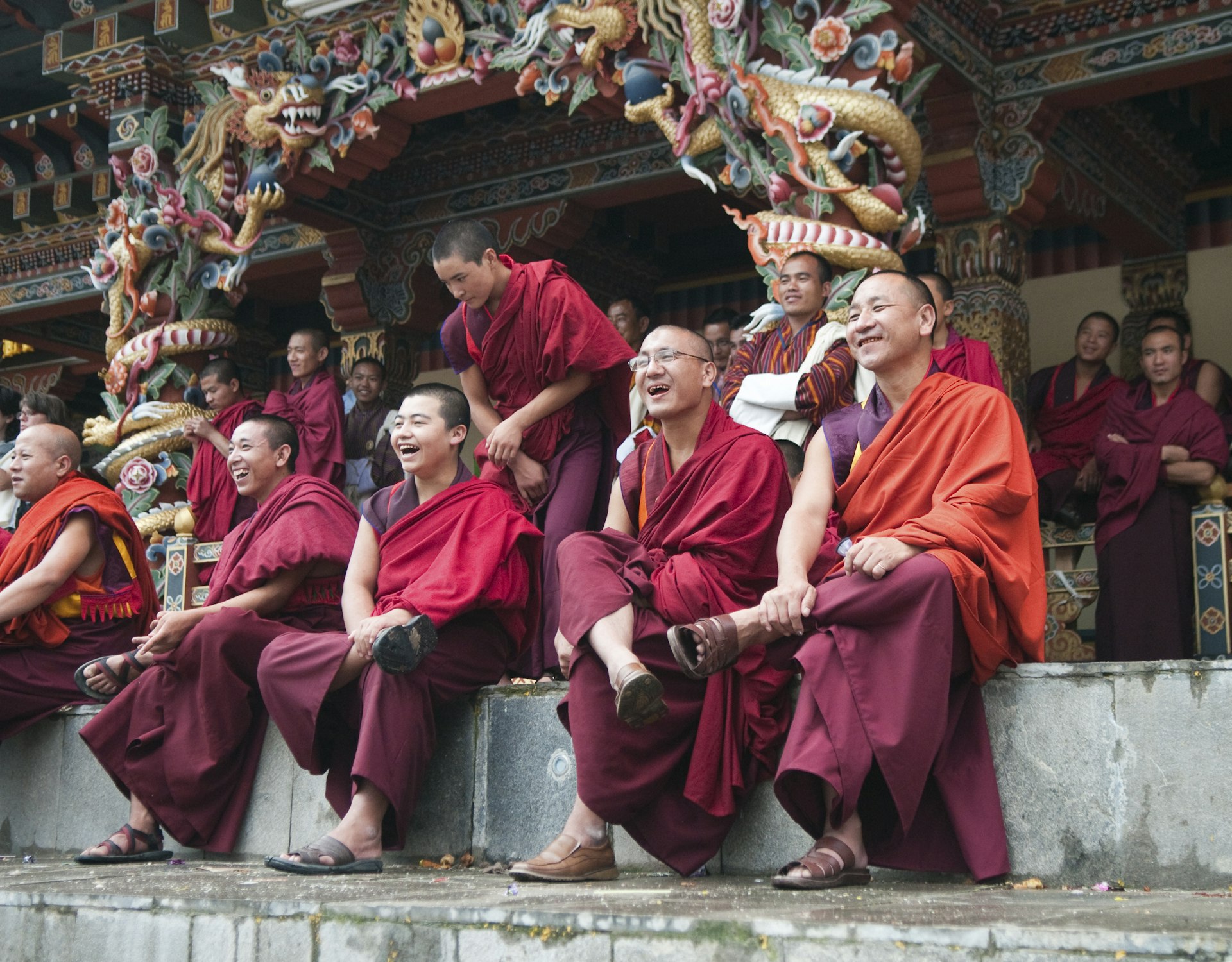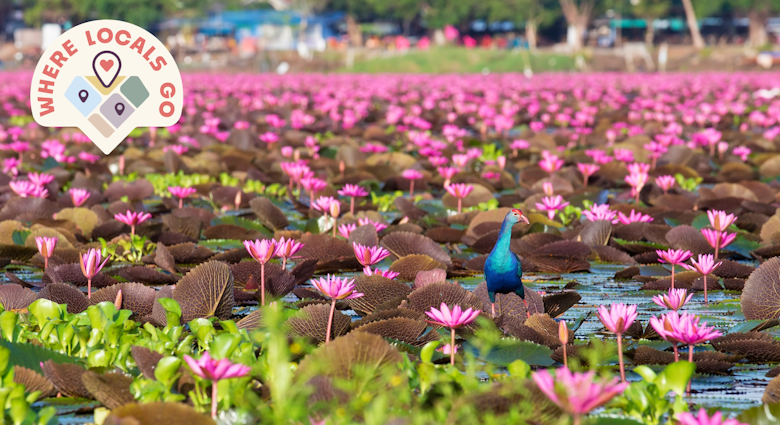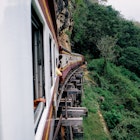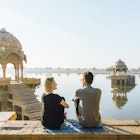Bhutan has long had a reputation as an exclusive, remote destination that only opens its doors to a lucky, well-heeled few. Its golden-roofed temples, magnificent fortress-like monasteries and timeless rural villages are as close to a Shangri-La as you can find in the modern world. Unfortunately, visiting paradise comes at a hefty price.
Bhutan’s tourism mantra has long been “high value, low impact,” and its aim is simple: to maximize the financial benefits of tourism while minimizing its environmental and cultural impact. It’s a perfect example of the country’s guiding policy of “Gross National Happiness.”
The country kept its doors locked tight during the Covid-19 pandemic and only reopened to tourism in September 2022, but with this reopening has come a major overhaul of the country's strict tourism regulations. If you are tempted to take the plunge on a once-in-a-lifetime visit to Bhutan, here’s the lowdown on Bhutan's new travel rules and exactly how to arrange a trip to this unique and magical Himalayan country.

What are the new tourism rules?
Until 2020, foreign tourists were charged a flat minimum fee of US$250 per person per day for a fully organized tour, of which US$65 went to the government to help fund free education and healthcare for Bhutan’s citizens.
Beginning September 2022, foreign tourists are now charged a US$200 per person per day Sustainable Development Fee (SDF) that the government says will further contribute to sustainable tourism development, tourism training and carbon offsetting.
The other major change is that tour prices are no longer fixed, leaving tour companies free to charge what they want depending on the levels of service or activities, thus giving visitors some choice over things like hotel costs. The bad news is that travel costs are now in addition to the US$200 per day fee, not included. Comb through the small print, and you'll find that families get a small break, paying 50% of the SDF (i.e., US$100 per day) for kids aged six to twelve, and children under five being exempt from the fee entirely.
Another change is that foreign tourists now must pay entry fees to the main sights, ranging in price from Nu 2000 (US$25) for the famous Tiger's Nest Monastery to Nu 1000 (US$12.50) for most other popular temples and dzongs (fortress-like monasteries). This will add US$100-200 to most tours. Most of these religious sites will now close to tourists on popular Buddhist holidays, which is a shame as these are often the most colorful times to visit.
How Will This Change Tourism in Bhutan?
For starters, trips to already-exclusive Bhutan just became even more expensive. Given this, it’s likely that fewer foreign tourists will visit the country, and those that do will choose shorter trips close to the popular sights around Paro (Bhutan's international airport) and the capital Thimphu. Longer trips to the fascinating but more remote central and eastern regions now come with a much higher price tag, as does trekking, which is generally more expensive to arrange than a cultural tour.
For example, Bhutan's famous 27-day Snowman trek (often called the “world's hardest trek”) now costs at least US$3500 more per person than it did under the old rules. The hike’s fees could well make Nepal's equally unspoiled Himalayan regions, such as upper Dolpo and Mustang (which have their own fees of US$500 for ten days), more financially appealing.
What about regional Indian tourists?
The main exception to the new fee rule is Indian tourists, who pay a much smaller SDF fee of just Nu 1200 (US$15) per person per day. Indian visitors must pre-arrange a guide, hotel accommodation and permits to travel east of Thimphu. This can be arranged through a Bhutanese agent or independently.
Many Bhutanese travel agents point out that with Indian tourists making up 77% of annual visitors to Bhutan (243,000 out of a total 315,600) and many arriving in their own vehicles and cooking their own food on budget trips, it’s hard to see how Bhutan can justify its fee system in the name of either sustainable tourism or avoiding cultural impact.
How much does a trip to Bhutan cost now?
Including the US$200 SDF per person per day, most Bhutanese agencies will now charge between US$350 and US$450 per person per day for a fully inclusive tour, up from the previous US$250 per day. Trekking will likely be a bit pricier, and small groups of two or three will be more expensive than larger groups.
What the new rules do allow for is overnights in guest houses, heritage farmhouses or rural homestays, which are a bit cheaper than tourist hotels. Under the old rules, you paid the same daily rate regardless of whether you stayed in a comfortable four-star hotel or on the floor of a local homestay, which limited the appeal of community tourism. Now you pay for what you get. The downside is that even if you stay in a simple rural homestay, you will still pay around US$300 per day for your trip, leaving you with budget travel at a top-end price.

How to plan your trip
Until 2022, tourists had to arrange their travels through a registered Bhutanese travel agent. Now tourists are allowed to book trips directly with hotels, so if you are just planning a visit to Thimphu and Paro towns, you can theoretically just book a hotel, a guide and a couple of airport transfers directly with a hotel, cutting down on transportation costs.
For a more complicated itinerary involving multiple overnight stops, cultural programs, day hikes, trekking and other activities, you are still better off booking with an experienced agency. Bhutanese tourism infrastructure isn't yet developed enough to offer easily bookable separate transportation and guide services.
Start planning early. You will need at least a month to pin down your itinerary, pay the tour operator and get your visa approval. If you are visiting in the high season months of October, November, March and April, you will want to book your flights to Bhutan further in advance.
Planning your itinerary
Because Bhutan is expensive, many travelers are tempted to limit their visit to just a few days around the Paro Valley. There are definitely some fabulous medieval temples, monasteries and museums here, as well as some intriguing sights in nearby Thimphu, where the 16th and 21st centuries manage to coexist seamlessly.
Stick to these easily accessible sights, however, and you'll only see the most touristed parts of Bhutan. With a few more days, you can visit the delightful valley of Punakha or stay overnight in the little-visited valley of Haa, accessible from Paro over the country's highest motorable pass. Anyone wanting to really get off the beaten track should head out to the center or east of the country.
Perhaps the best way to plan your trip is to use an agency’s itinerary as a starting point and modify it to your interests. If you have a specific interest in embroidery, hiking or Buddhism, a good agency will adapt the tour to your preferences. This is also the time to mention any extras, such as a traditional hot-stone bath, an overnight in a rural homestay or a day of rafting or mountain biking. Be sure to time your visit with one of Bhutan’s fabulous festivals.
We always recommend throwing in a few lesser-visited temples and day hikes to get you off the tourist circuit. Even with a limited amount of time, you can detour to a lesser-known temple, nunnery or hermitage to experience Bhutan at its most authentic.

Not to miss places in Bhutan
Taktshang Goemba
Hike up to Bhutan's most iconic temple, the Tiger's Nest Monastery, whose medieval shrines are said to be attached to the cliff face by the hairs of angels.
Punakha Dzong
Bhutan's most beautiful fortress is lined with purple jacaranda flowers in spring and hosts several of Bhutan’s most spectacular festivals.
Thimphu
Bhutan's capital is home to historically important monasteries, protector deities, a takin reserve, archery tournaments, a fabulous weekend market and the magnificent former seat of government at Tashi Choe Dzong.

Top Bhutanese experiences
Attend a Tsechu (Religious Dance Festival)
Almost every dzong or temple in Bhutan has an annual festival featuring sacred monk dances, colorful costumes and local fairs. The main ones in Thimphu and Paro are a highlight of the Bhutanese year, but it's also worth seeking out a lesser-visited event.
Explore Bhutan on foot
Even a short walk in Bhutan leads up to a sacred meditation center, a Buddhist pilgrimage site or through ancient forests of blooming rhododendrons. It's easily the best way to experience the country's pristine rural charm. For an overnight trip, try the Bumdrak trek, which takes you on a back-door hiking route to the famous Taktshang Monastery.
Relax in a traditional hot stone bath
Soaking in a traditional Bhutanese wooden bathtub in water heated by medicinal hot stones and fragranced with mountain herbs is simply the perfect way to end a long day of sightseeing.
Best time to visit
The best months to visit Bhutan are March/April – for warm temperatures and stunning rhododendron blooms – and October/November – for clear Himalayan views and the most popular festivals.
Now that there are no longer discounts for off-season travel, there's little incentive to visit in the cold winter (December to February) or wet monsoon months (June to September).

How long should I spend in Bhutan?
As long as you can afford it without raiding your kids’ college fund! With a four-day trip, you could see the highlights of the Paro Valley and the quirky capital Thimphu. If you have a week, you can continue over the Dochu-la mountain pass into the charming Punakha Valley.
To get to the central Bumthang Valley or the fascinating but remote far east, you will need a couple of weeks, though a domestic flight from Thimphu can speed things up here.
The bottom line is that you will likely only make one trip to Bhutan in your lifetime, so be sure to make the most of it.
How to get a Bhutan visa
Once you’ve agreed on your itinerary and tour price, the next step is to pay your agency (most likely via a bank transfer) to the agency's account at the Bhutan National Bank. If you are lucky, this will only involve one visit to your bank. Be prepared to explain where Bhutan is.
Once the wire has gone through, you will fill out a visa form and send your agency a digital photograph and scan of your passport photo page. Getting a visa is just a formality, and the agency will email you a copy of your visa authorization after a few days. The visa costs US$40 and will likely have been included in your tour price.
If arranging things yourself, you will have to pay the SDF fee directly to the government and apply for your visa through the Department of Immigration, though the exact process for this hasn't yet been revealed.
On arrival at Paro airport or at the land border with India, you will simply present your visa authorization, and immigration will stamp the visa into your passport.
How to get to Bhutan
Most visitors fly into Bhutan's Paro airport from Delhi, Bangkok or Kathmandu on the national airline Druk Air. It’s essential to print out a copy of your visa authorization before check-in.
With the reopening of tourism in September 2022, foreign tourists can once again enter Bhutan overland through one of three border crossings with India. In reality, the crossing to Phuentsholing is the only one that sees much tourist traffic, mainly with adventurous travelers combining Bhutan with the sights of nearby Darjeeling or Assam.














